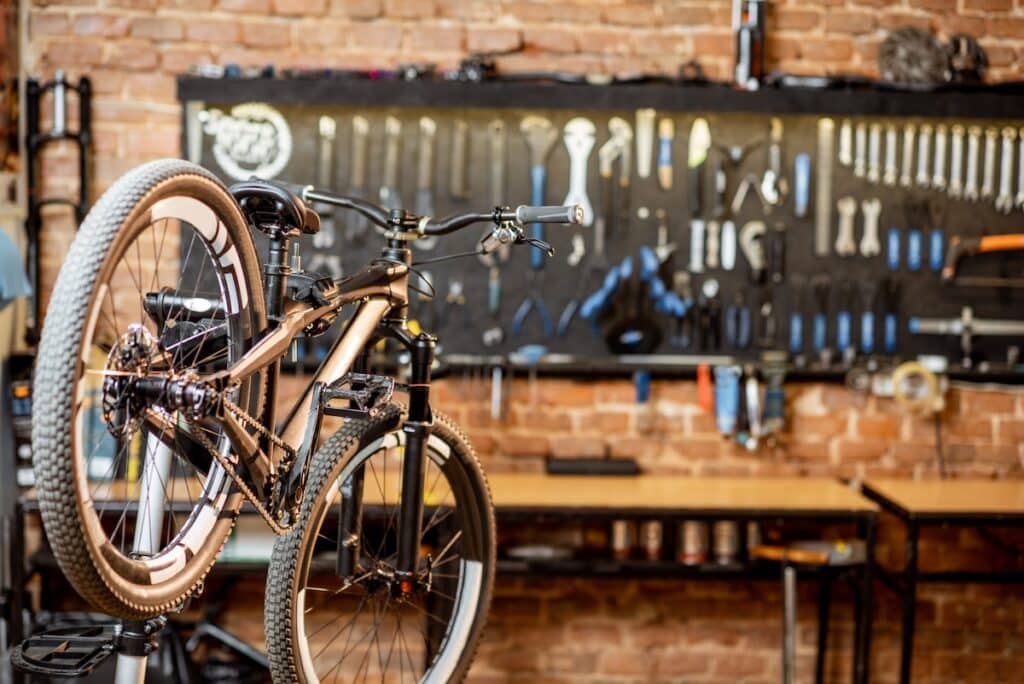You’ve ridden the trails, you’ve grabbed the right gear, and now you’re ready to step up to the next level. Buying a new bike is one way to get there, but not everyone has that in their budget. The next best thing? Soup up your current ride with some essential mountain bike upgrades.
Before we dive in, it’s important to note that every rider will have different priorities for upgrading their MTB. The modifications that you do make will depend on the weak points of your current bike. For example, if you’re already riding with a solid set of brakes, you should work on improving components that tend to drag when you’re on the trail.
With that said, let’s get going.
1. Contact Points with the Bike
Your bike is an extension of your body. If the contact points are shoddy, you’ll feel a disconnect when on the trails. When examining your MTB for upgradable areas, the best place to start is to think about these crucial areas of your bike.
Pedals and Shoes
First up, the pedals. They’re the unsung heroes of your bike, and trust us, they deserve some love. There are two main types of pedals: flat and clipless.
- Flat Pedals: These are great for beginners and experts alike who like to keep things easy-going as well as rip downhill. You can bail out quickly if things get sketchy.
- Clipless Pedals: Despite the misleading name, these actually clip your shoes to the pedals. It’s all about that power transfer and control. These are a great upgrade for people who love to climb and go fast.
When it comes to shoes, you want ones that match your pedals. Flats need grippy soles, while clipless pedals require cleats. Look for shoes that are comfortable, durable, and breathable.
Saddle
Nothing ruins a ride faster than an uncomfortable saddle. While you don’t need (and wouldn’t even want) a cushy road bike saddle, you’ll still need something that doesn’t leave you waddling after the riding is done. It may take some time to find the right saddle for your body, but once you find a match for your sit bones, riding will become even more enjoyable.
Grips
Your hands are your connection to the bike, and you want that connection to be rock solid. Good grips reduce hand fatigue and give you better control.
- Grip Materials: You’ve got options like rubber, silicone, and foam. Lock-on grips are easy to install and won’t slip when things get gnarly.
- Choosing the Right Grips: Look for grips that feel good in your hands and match your riding style. Thick, thin, squishy, or firm – it’s all about personal preference.
2. Dropper Post
Ever wish you could change your saddle height without stopping? Enter the dropper post. This nifty gadget lets you adjust your saddle height on the fly. Being able to make quick adjustments will give you confidence going downhill and improve your climbing efficiency.
- Benefits: Lower your saddle for those steep descents and raise it back up for the climbs. It’s like having a cheat code for your bike.
- Choosing the Right One: Look for travel length (how much the post moves), the actuation mechanism (mechanical vs. hydraulic), and overall reliability.
3. Tires
We covered contact points between you and the bike, so it’s only natural that we’d talk about your bike’s contact point with the ground. Good tires can mean the difference between eating dust and riding like a pro.
- Types of Tires: Cross-country, trail, enduro, downhill – each has its own style. Tubeless tires are awesome because they reduce the risk of flats and can be run at lower pressures for better traction.
- Key Features: Tread pattern, tire width, casing, and rubber compound. It sounds techy, but it’s all about grip and durability.
- Choosing the Right Tires: Pick tires based on the terrain you ride. Muddy trails? Go for aggressive tread. Rocky paths? You’ll want something tough and grippy.
4. Brakes
In Colorado, our trails have long climbs and long descents. When you’re ripping down the mountain, you want to make sure that you have some stopping power.
- Types of Brakes: Mechanical disc brakes are better than rim brakes, but hydraulic disc brakes are where it’s at. They offer better modulation and more stopping power.
- Features to Look For: Rotor size (bigger is better for stopping power), brake pad material (organic vs. metallic), and lever adjustability (because one size doesn’t fit all).
- Maintenance Tips: Keep them bled once a year, check the pads, and make sure those rotors are straight. Your life could depend on it.
Let Us Help Upgrade Your Mountain Bike
So, there you have it, folks – the must-have upgrades for your mountain bike. Again, it’s important to remember that you will need to assess your bike’s strengths and weaknesses based on your riding preferences before deciding on what to upgrade. There are a ton of nuances to consider when making upgrades, and we can’t cover them all in a blog.
If you’re serious about riding but aren’t sure which upgrades your mountain bike needs, the team at Base Camp is always here to lend a hand. Just stop by our shop and talk to one of our MTB experts.

